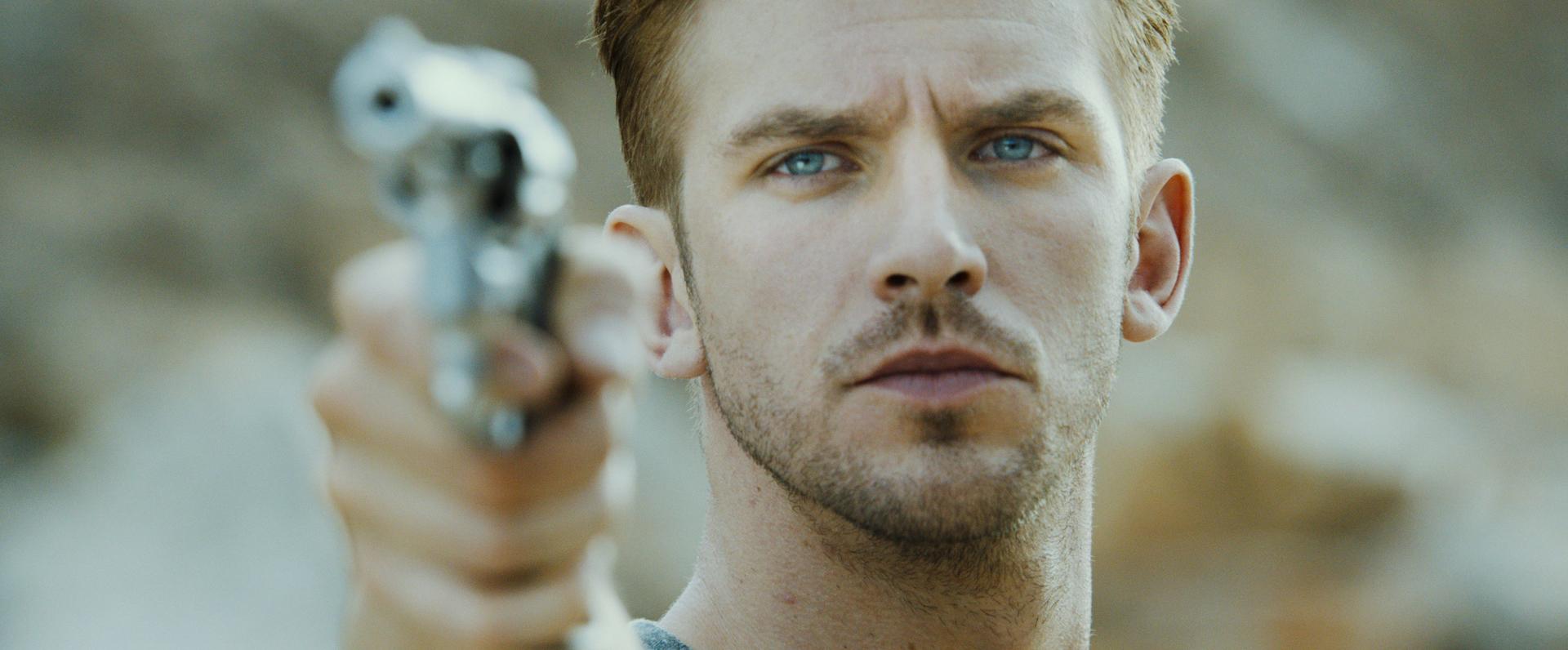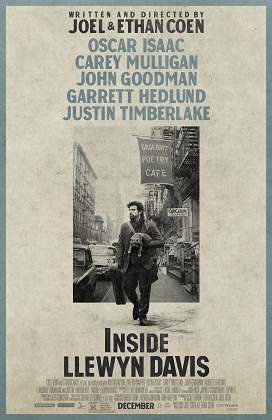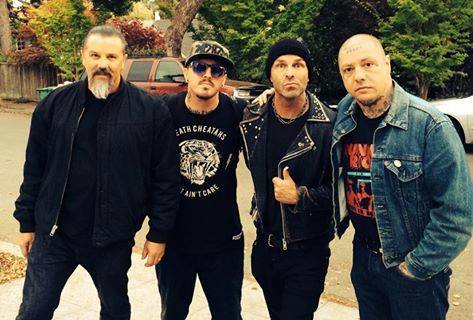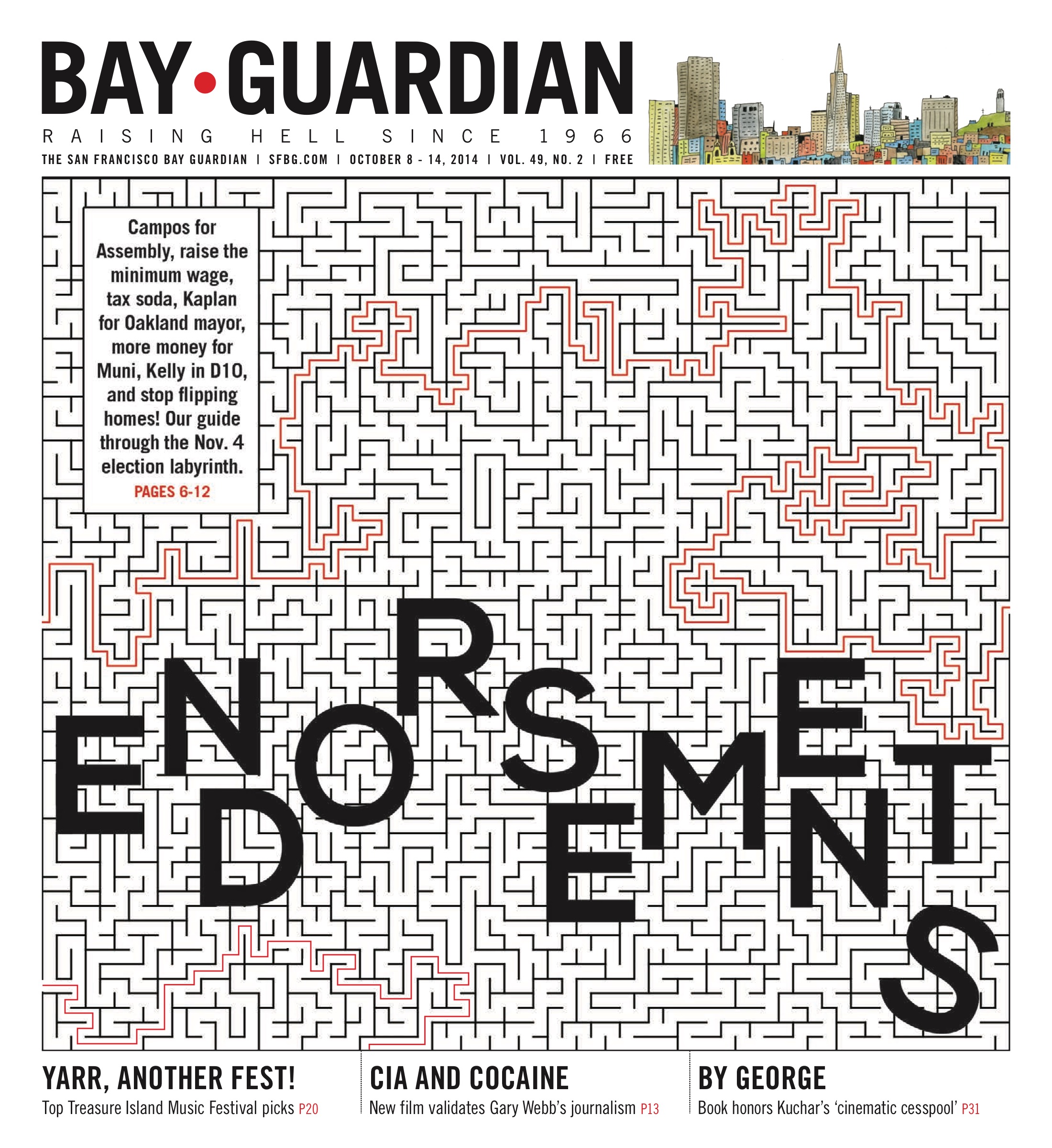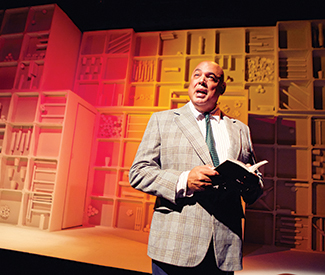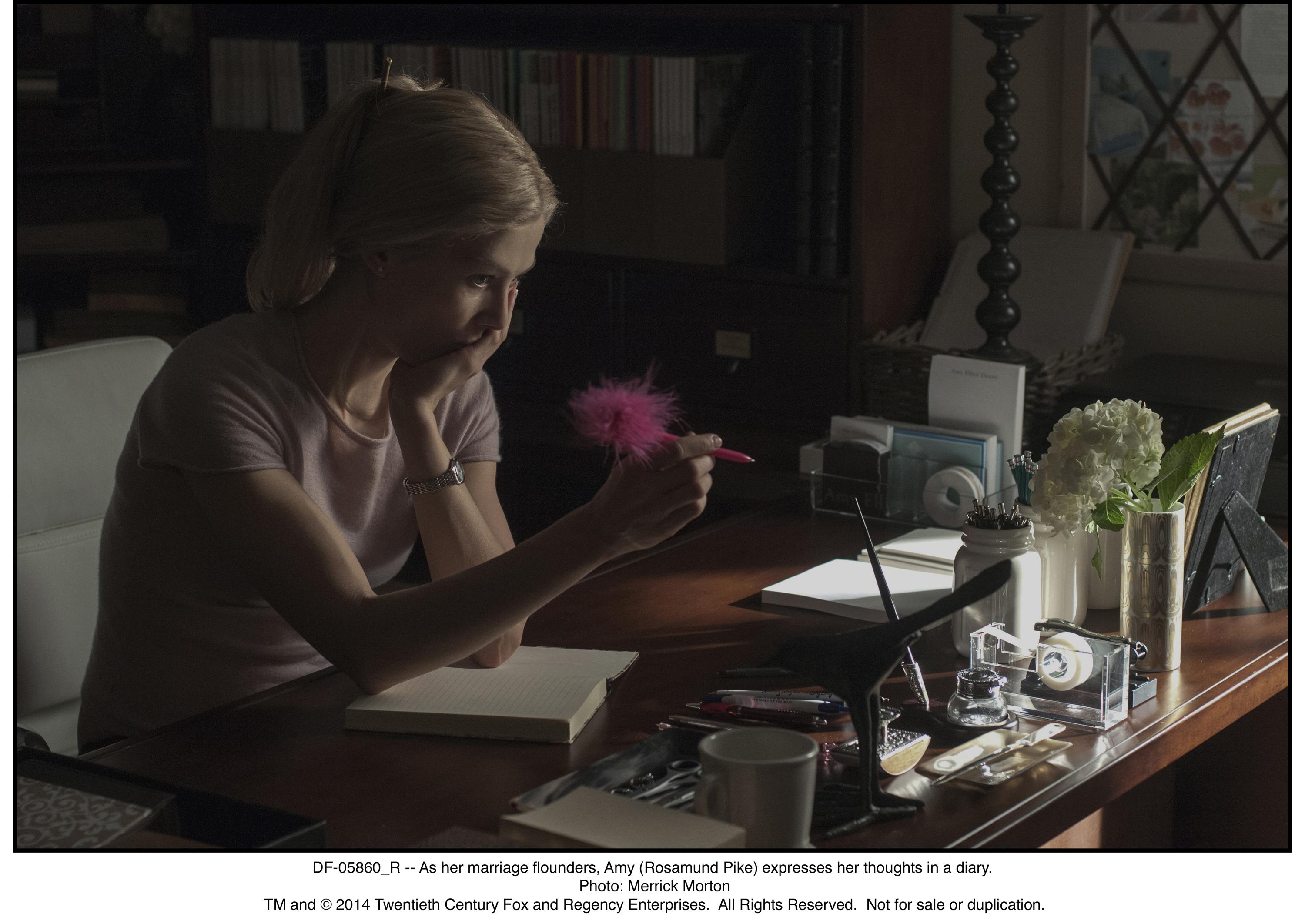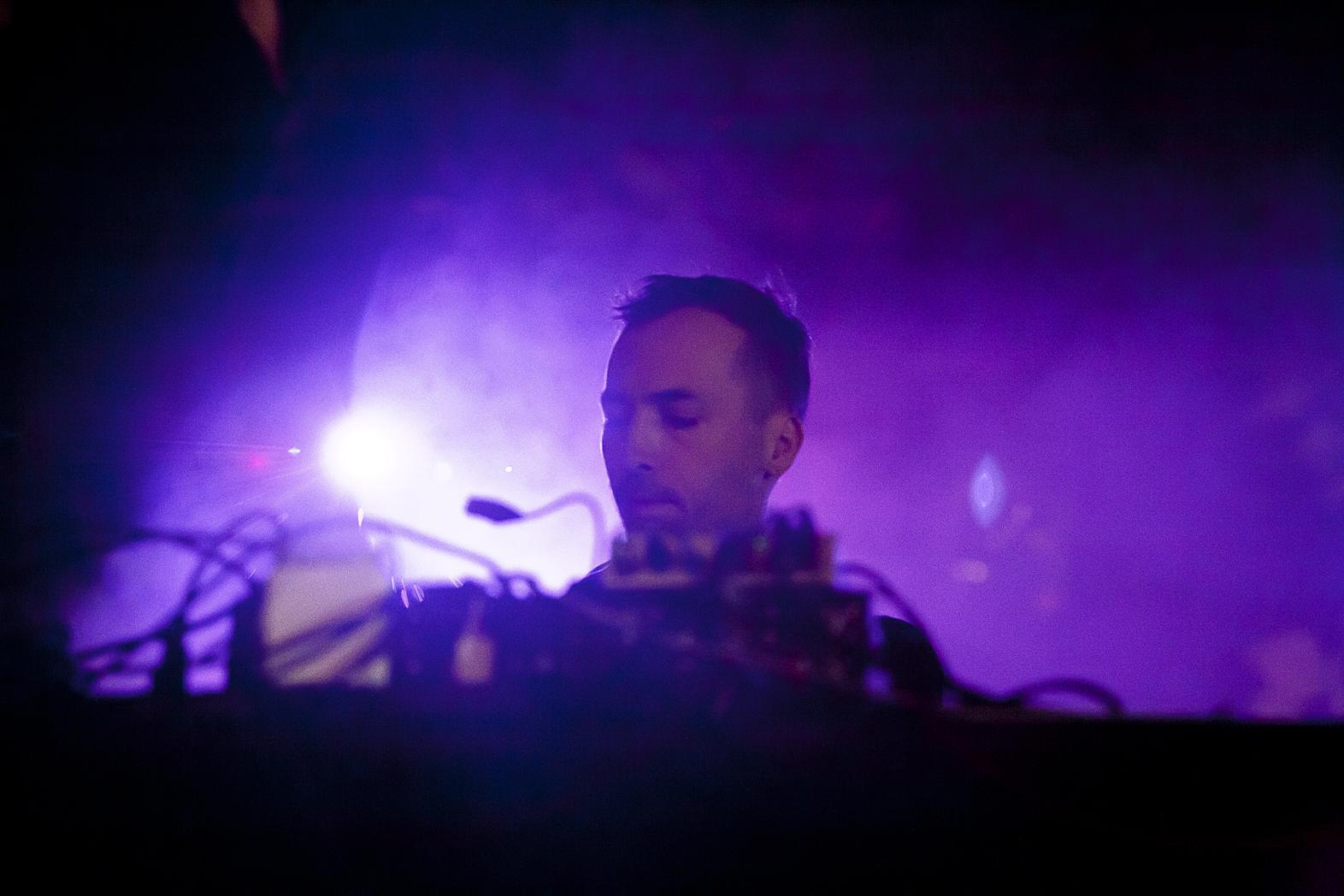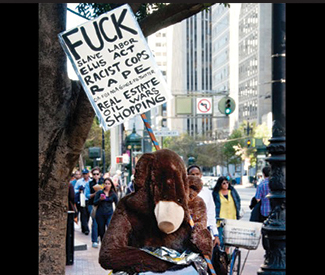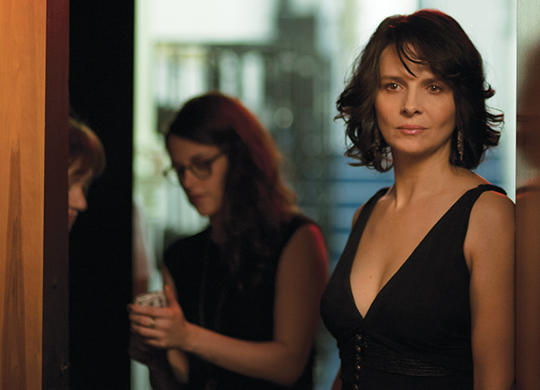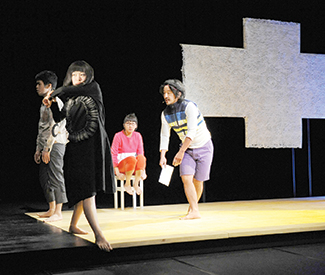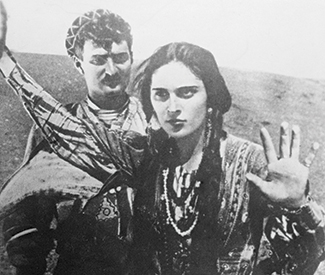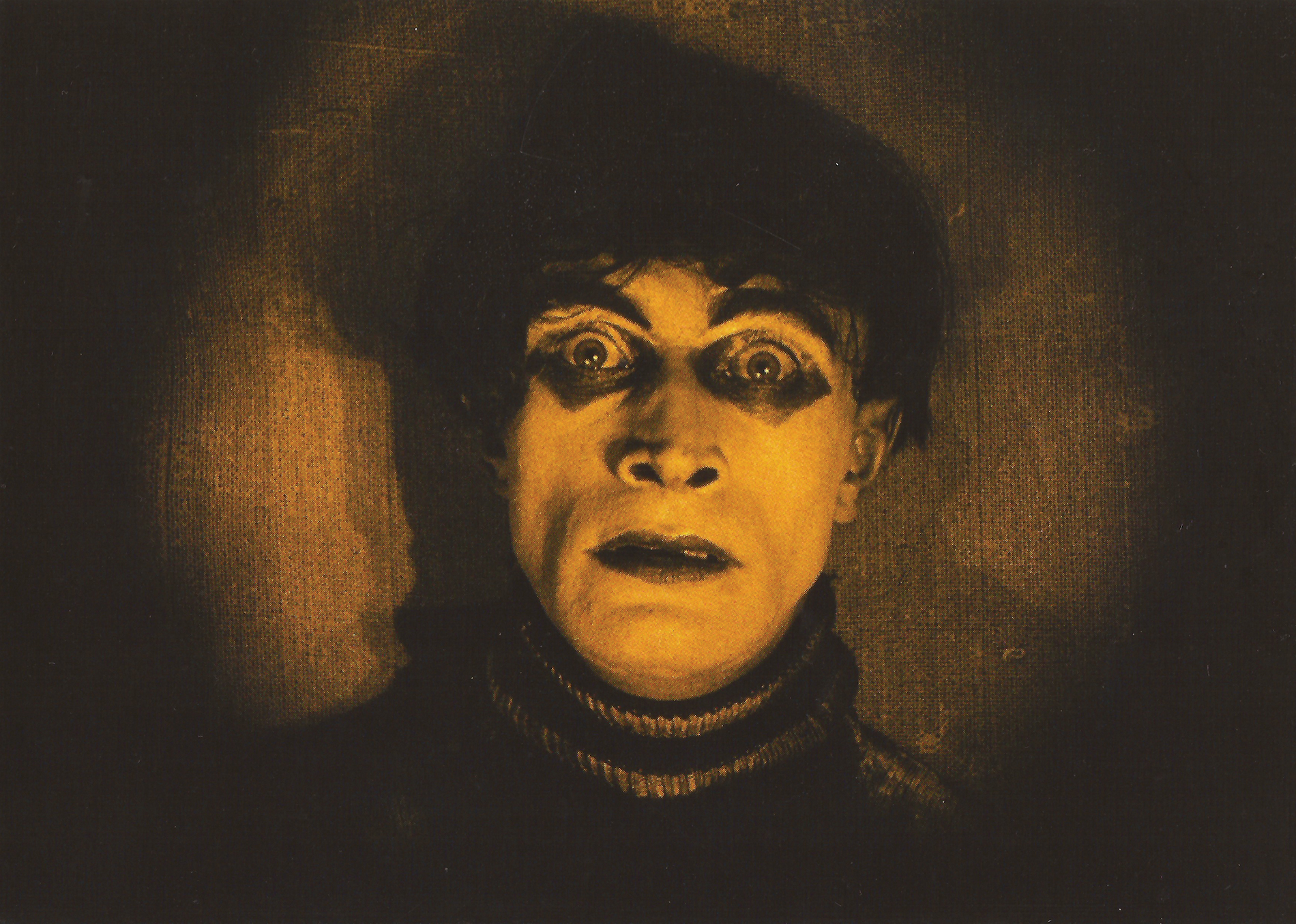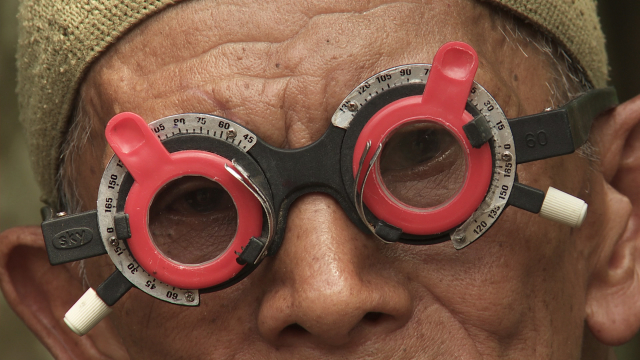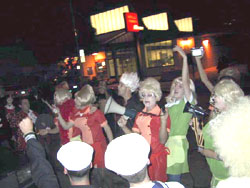Film listings are edited by Cheryl Eddy. Reviewers are Kimberly Chun, Dennis Harvey, Lynn Rapoport, and Sara Maria Vizcarrondo. For rep house showtimes, see Rep Clock.
MILL VALLEY FILM FESTIVAL
The 37th annual Mill Valley Film Festival runs Oct 2-12. Venues include the Lark Theater, 549 Magnolia, Larkspur; Cinearts@Sequoia, 25 Throckmorton, Mill Valley; and Smith Rafael Film Center, 1118 Fourth St, San Rafael. For tickets (most shows $8-14) and complete schedule, visit www.mvff.com. For commentary, see Film.
OPENING
Abuse of Weakness Those who last saw Isabelle Huppert as a dutiful daughter in 2012’s Amour will be both thrilled and piqued to see the tables turned so remarkably in Catherine Breillat’s Abuse of Weakness. Huppert gives an unapologetic, stunning tour de force performance in what appears to be a story torn from the filmmaker’s own life, when Breillat suffered a series of strokes in the ’00s and ended up entangled in a loving and predatory friendship with con man Christophe Rocancourt. Here, moviemaker and writer Maud (Huppert) is particularly vulnerable when she meets celebrity criminal and best-selling writer Vilko (Kool Shen). She is determined to have him star in her next film, despite the protestations of friends and family, and he helps her in return — by simply helping her get around and giving her focus when half her body seems beyond her control, while his constant machinations continue to compel her. Crafting a layered, resonant response to what seems like an otherwise clear-cut case of abuse, Breillat seems to have gotten something close to one of her best films out of the sorry situation, while Huppert reminds us — with the painful precision of this intensely physical role — why she’s one of France’s finest. (1:45) Roxie. (Chun)
Annabelle The freaky doll from 2013’s The Conjuring returns to terrorize an expectant mother … AND YOU. (1:39)
Art and Craft Fans of docs that can be summed up with the phrase “I can’t believe that shit really happened” are in for a treat with Art and Craft, which boasts an eccentric subject who allows filmmakers Sam Cullman, Jennifer Grausman, and Mark Becker full access yet remains entirely inscrutable. He is art forger Mark Landis, diagnosed as schizophrenic after a teenage nervous breakdown, now in his 50s, in fragile health, and living in his late mother’s Mississippi apartment. For 30-plus years, his illness has manifested in an obsession with recreating artworks with remarkable accuracy (Dr. Seuss, Picasso, you name it) — and then arranging elaborate scenarios (an inheritance, the passing of a nonexistent sister, situations that require him to dress as a priest) that involve donating the fakes (to 46 museums in 20 states, most delighted to benefit from his philanthropy). He’s not in it for the money, so the FBI merely observes his exploits, leaving the legwork to former Cleveland Art Museum employee Matt Leininger, who after realizing the deception at his own institution becomes consumed with uncovering Landis’ trail of phony brush strokes. This cat-and-mouse tale (in which the mouse is completely on his own astral plane of reality) leads up to one of the most awkward gallery openings ever captured on film — with artwork as beautifully created as it is plagiarized and deliberately misrepresented. (1:29) Opera Plaza, Shattuck. (Eddy)
Brush With Danger Indonesian American stunt woman Livi Zheng wrote, directed, and stars in this action thriller about a painter who unwittingly becomes entangled with gangsters. (1:30) 1000 Van Ness.
Gone Girl Gillian Flynn’s best-selling thriller gets the big-screen treatment from director David Fincher, with Ben Affleck and Rosamund Pike starring as a husband and wife whose small-town lives are not what they appear to be. (2:25) Presidio.
Left Behind Jeepers creepers, they went and remade 2000 Christian scare flick Left Behind: The Film, based on the best-selling book series by Tim LaHaye and Jerry B. Jenkins. Just gonna come right out and let you know the Antichrist character does not appear in Vic Armstrong’s do-over. WEAK. But it does contain supremely awkward breakdancing; terrible CG of an airplane floundering after the Rapture makes flying a dicey prospect (apparently, air traffic control is a largely evangelical profession); erstwhile CW network heartthrob Chad Michael Murray as an internationally renowned investigative journalist (the same role Kirk Cameron played, also implausibly, in the original); and — best of all, and the only reason to seek out this ham sandwich of a movie — Nicolas Cage, who delivers possibly the worst performance of his career as an airline pilot whose sins include thinking about cheating on his born-again wife (Lea Thompson) and coveting U2 concert tickets. All of this brings up a very important question for our times: Does Jesus snark? (1:50) (Eddy)
The Liberator Lush production values and a smoldering performance by Venezuela’s best-known acting export (Édgar Ramírez), elevate this Simón Bolívar tale from mere biopic to epic (bio-epic?) It begins amid revolutionary tumult before stepping back in time to Bolívar’s younger days; we’re brought up to speed on the tragic early deaths of his well-to-do parents, as well as the yellow-fever death of his delicate Spanish wife and some globe-trotting that allows Ramírez to show off his flawless French (he also speaks Spanish and English in the film), and for Bolívar to meet characters who prove important to his crusade for Venezuelan independence. Bombastic battle scenes and grueling marches (in and across jungles, open fields, the snowy Andes, seaside forts, blood-stained villages, etc.) soon follow, with Bolívar’s bravery and rousing speechmaking (“Freeeedooommm!”) inspiring people across northern South America and beyond, from every class and race, to join his cause. If this two-hour film feels a bit tight for such a sprawling story — especially when you consider that Ramírez’s breakout role came with 2010 miniseries Carlos, which lavished five-and-a-half hours on the career of Carlos the Jackal — it still makes for stirring viewing. (1:59) SF Centre, Sundance Kabuki. (Eddy)
Men, Women & Children The web of title characters in Jason Reitman’s new film, set in a nonspecific-feeling Austin, Tex., stand in for a larger culture, digital native and immigrant alike, leading a significant portion of their lives online. A mother (Jennifer Garner) obsessed with the invidious snares of the scrolling feed, feverishly tracks the digital micro-movements of her teenage daughter (Kaitlyn Dever of 2013’s Short Term 12), sabotaging the latter’s burgeoning relationship with a sweetly troubled, Carl Sagan-quoting ex–football player (The Fault in Our Stars’ Ansel Elgort). Another mother (Judy Greer) embraces the seedier aspects of the mercantile web, bolstering her daughter’s dreams of stardom by pimping out her image to private customers. A man (Adam Sandler) and a woman (Rosemarie DeWitt) drift unconnected through their marriage and seek recourse among web escorts and a dating site for cheaters. The message, underscored with motifs running thickly through the interconnected plot lines, is that our lives and relationships are echoed and overlapped by a ghostly online population, whom our loved ones experience, if they notice, only as a zoned-out absence, a silent withdrawal from the room. Reitman (2009’s Up in the Air), who co-wrote the film with Erin Cressida Wilson (2002’s Secretary), finds a wealth of visual tools for mapping this populace. Texts and Facebook messages bubble up and hover over crowd scenes in an overlay, flooding the screen with drifting commentary. At cheerleading practice, one paper-thin teenager silently backstabs another via a hailstorm of emoji. If the film doesn’t issue a fiery polemic, most of its protagonists do seem caught in a stultified daze by a succession of variously proportioned screens; the emotional payoffs, and the brutal, awkward collisions, tend to come when they look up. (1:56) Embarcadero. (Rapoport)
ONGOING
The Boxtrolls (1:37) Balboa, Metreon, 1000 Van Ness, Presidio.
Boyhood Believe the hype: Richard Linklater’s Boyhood is one of the best films of the year. It’d be a towering cinematic accomplishment in any year. By now, you’ve heard the set-up, which borrows elements from Linklater’s Before films, as well as his coming-of-age dramas (1993’s Dazed and Confused in particular). He filmed his cast — including titular youth Ellar Coltrane, Lorelai Linklater as his older sister, and Patricia Arquette and Ethan Hawke as his divorced parents, on and off over 12 years — with scenes touching on moments both monumental (high-tension moments with ugly stepfathers) and microscopic (the creation of a perfect campfire s’more). The years flow by, signaled not by any obvious gestures like on-screen text, but by changing hairstyles, pop culture references, and evolving video-game consoles. Watching Coltrane’s Mason grow from arrowhead-obsessed tyke to thoughtful college freshman is a rare and remarkable pleasure; among the more experienced actors, Arquette is particularly moving as a fiercely loving single mom determined to advance in her career despite continual, mountain-sized roadblocks in her personal life. (2:40) Balboa, Embarcadero, 1000 Van Ness, Sundance Kabuki. (Eddy)
Dawn of the Planet of the Apes As usual, a heady hybrid of anticipation and dread accompanies all Planet of Apes installments: you brace yourself for the abused, righteously rebellious apes; the apocalyptic mise-en-scène laden with symbolism; and more overt messaging concerning animal testing, civil rights, and gun control. But why worry? In line with 2011’s Rise of the Planet of the Apes, the PG-13 high-fives go to new Apes director Matt Reeves (2008’s Cloverfield) for sparing us animal kills, gore, and graphic violence, despite its Dawn of the Dead-evoking title. Really, this Dawn is all about the bitterly fought beginnings of a civilization among the primates north of the Golden Gate Bridge in Muir Woods, complete with community building, social structure, and alas, a burgeoning war with the humanoids amid vaguely familiar SF ruins, setting off an epic showdown that challenges not only the oft-repeated commandment “ape shall not kill ape” but takes advantage of our anthropomorphized pals’ ability to swing with the C4 explosions. The viral drug ALZ 113 that led to super-intelligent primates like chimp hero Caesar (motion-captured Andy Serkis) has decimated the human population, leaving the field wide open for enterprising and vengeful creatures like scarred lab survivor Koba (motion-captured Toby Kebbell). Neither quite trusts the band of desperate human survivors — including friendly Jason Clarke, nurturing Keri Russell, and token asshole Kirk Acevedo — that ventures into the apes’ woods to harness the power of nature, namely a dam, to electrify their SF compound. You know what side of the evolutionary span we’re on when the humans seem much more interchangeable than the chimps, and the movie can barely wait to end on its contemporary version of a Touch of Evil (1958) crane shot, as it zooms to an extreme close-up of a certain chimp’s carefully crafted eyes. (2:10) Metreon. (Chun)
The Disappearance of Eleanor Rigby Writer-director Ned Benson’s The Disappearance of Eleanor Rigby began as separate films about a failed marriage, told from the points of view of the husband (James McAvoy), and then the wife (Jessica Chastain). Because Americans will happily binge-watch entire TV seasons but still get the shakes when confronted with a two-part film, the segments (titled Him and Her) are getting wide release in the edited-together Them. (Diehards will have a chance to seek out the complete work eventually, but for now, this review concerns only Them.) As the film begins, Chastain’s Eleanor (yep, named after the Beatles song) flings herself off an NYC bridge. She survives physically, but her mental state is still supremely fragile, so she checks out of her Manhattan life and her marriage to Connor (McAvoy), and digs in at the chic suburban saltbox occupied by her parents (Isabelle Huppert and William Hurt) and sister (Jess Weixler), a single mother with a young son. Meanwhile, Connor mopes around his failing restaurant with his chef BFF (the suddenly ubiquitous Bill Hader), and pays occasional visits to his own moping father (Ciarán Hinds). The estranged couple circles each other, in flashbacks and occasional run-ins, and the audience is slowly made privy to the tragedy that drove them apart and has them both reeling from grief months later. Even in mash-up form, this is a delicate film, enhanced by Benson’s confidence in his audience’s intelligence; what could have been a manipulative tear-jerker instead feels authentically raw, with characters whose emotional confusion leads them to behave in realistically frustrating ways. The casting is note-perfect, with a special nod to Viola Davis as Eleanor’s world-weary college professor. I’ll be seeking out Her just to catch more of that performance. (2:03) SF Centre, Sundance Kabuki. (Eddy)
Dolphin Tale 2 (1:48) Metreon.
The Drop The late James Gandolfini gets a fitting final feature-film sendoff in this edgy microcosm of a crime movie, set among the small-time hoodies of Brooklyn, but just easily recast in Tony Soprano’s Jersey or the Beantown of 2010’s The Fighter. As Cousin Marv, a onetime dive-bar owner forced to turn his watering hole over to Chechen mobsters as a drop spot for bookmaking loot, he also gets worthy sparring partners in Tom Hardy and Matthias Schoenaerts (star of 2011’s Bullhead, director Michaël R. Roskam’s Oscar-nominated breakout). Hardy’s Bob looks to be the perpetual side guy to his Cousin Marv; he seems sludgy and lacking confidence, until he finds a battered pit bull puppy in a trashcan belonging to Nadia (Noomi Rapace) — and discovers himself in the middle of a brazen robbery at the drop bar. With the puppy and Nadia comes the canine’s purported owner, rumored killer, and neighborhood “nut case” Eric (Schoenaerts). The beauty of Dennis Lehane’s screenplay, spinning off his short story “Animal Rescue,” is embedded in how the most banal niceties (like “Good to see you”) are used with Mamet-like skill to signal the threadbare facade of civilized behavior and convey an almost nihilistic sense of imminent threat. Meanwhile, Roskam walks a tightrope between the drab, wintry everyday and a pervasive mood of menace, creating a downbeat yet almost horrifying effect when the trigger is finally pulled — and the veil between the hidden and the real, the animal and the human, is dropped. (1:45) Metreon, 1000 Van Ness, Presidio, Sundance Kabuki. (Chun)
The Equalizer In this big-screen reboot of the 1980s TV series — which starred Brit Edward Woodward as Robert McCall, a former secret agent who’s since devoted himself to helping “people in need” — man-with-a-past Bob (Denzel Washington) lives his days of quiet desperation working for a Home Depot-like store. He spends his insomniac nights in the local 24-hour diner, sharing sympathies with juvenile hooker Toni (Chloë Grace Moretz). When Toni’s pimp beats her up, Bob tries to buy her freedom, but instead starts a bloodbath that attracts the attentions of a mafioso (Martin Csokas). When Toni calls Bob “Robert” you expect them to bond, but that’s not what director Antoine Fuqua (2001’s Training Day) has in mind — he’s aiming for shared vulnerability, and it’s the quality that unites everyone in this corrupt segment of Boston. Hollywood has long looked for a character to simultaneously please grown-ups and the hero-hungry young-dude demographic, and while this origin story leaves a taste of ham in your mouth, it’s a great way to bridge the divide. I’d happily watch The Equalizer 2 and frankly hope they make one. (2:08) Marina, Metreon, 1000 Van Ness, Sundance Kabuki. (Vizcarrondo)
Frank Who doesn’t want to be a musical savant, visually riveting, naturally gifted, freed from convention, and liberated of linear thought? The exception might be the doll-headed, damaged namesake of this comedy loosely inspired by the life of late English musician and comedian Frank Sidebottom (real name: Chris Sievey), and real-life Sidebottom sideguy Jon Ronson, who co-wrote the screenplay. And if this loving, very funny, bromantic take on the so-called creative process of rock seems a bit forced at times, that’s only because the movie is so clearly filtered through the archetypal wannabe, made likable by Domhnall Gleeson. His office worker Jon is struggling to write songs when he stumbles across a band, Soronprfbs, after watching their keyboard player attempt to drown himself at the beach. Manager Don (Scoot McNairy) taps the bystander to contribute to the chaos happening onstage, then drags him off for the making of the album. Mysterious leader Frank (Michael Fassbender), who never takes off his massive, faux-happy head, finds inspiration in threads protruding from upholstery. As Jon’s nest egg gets sucked into the recording budget and theremin player Clara (Maggie Gyllenhaal) rages against the interloper, he posts the band’s, er, artistry to YouTube, obtaining the group a coveted gig at South by Southwest. But who really wants this shot at fame? The sideman with a will to power, or the damaged true talent? Director Lenny Abrahamson and Ronson wisely place Frank squarely in the viral video/GIF/Vine-poisoned multiplatform miasma of today, put across all the more powerfully by Gleeson and particularly Fassbender, who reveals a fine singing voice. While cleverly referencing outsider artists big and small by way of right-on original songs by Stephen Rennicks, Frank asks vital questions about motivation and art-making in an era when it seems like everyone is getting their 15 minutes of fame — and we’re getting increasingly weary of eyeballing it and filtering the wheat from the gone-in-a-nanosecond chaff. Some make music because they want to be stars, while others, Frank says, do it because they have little other choice. (1:34) Balboa. (Chun)
Guardians of the Galaxy The trailer that nearly broke the internet didn’t lie: Guardians of the Galaxy is cheeky, hilarious, eye-popping fun. Its plot may be a predictable anti-hero’s journey, but the saga of Peter “Star-Lord” Quill (Chris Pratt), half-Earthling, half maybe-alien, as he transforms from scavenging scoundrel to rescuer-of-the-universe is so enjoyable nobody seeking a good time at the movies will care. Helping Quill in his battle against baddie Ronan (Lee Pace) are slinky, green-skinned Gamora (Zoe Saldana); rascally raccoon Rocket (voiced by Bradley Cooper); muscle-bound dim bulb Drax (former pro wrestler Dave Bautista); and a tree-like creature named Groot (voiced by Vin Diesel — his best performance in years, if ever, despite the fact that the only words the character ever utters are “I am Groot.”) Director and co-writer James Gunn (2010’s Super), working from a cult comic from the prolific house of Marvel, does a stellar job balancing action and goofiness, with plenty of unexpected touches along the way, including the best use of 1970s soft-rock since Reservoir Dogs (1992) and Cherish (2002). (2:02) Metreon, 1000 Van Ness, Sundance Kabuki. (Eddy)
Hector and the Search For Happiness Despite the inherent lovability of Simon Pegg, Hector and the Search For Happiness gives off a strong whiff of #firstworldproblems. Pegg’s well-meaning, too-tidy therapist Hector is at the end of his tether with his mewling patients, perfect girlfriend (Rosamund Pike), and immaculate London condo — he’s just dying to get dirty, mussed up, and fundamentally unsettled and along the way, he hopes to discover the secret to happiness, purportedly for his clients, but really, truly for himself. Getting out of his comfort zone with a dose of cultural colonialism, er, tourism, seems to be the answer, so Hector embeds himself, sort of, in Shanghai, where he meets wealthy businessman (Stellan Skarsgård) and falls for a tremulous club hottie (Ming Zhao); Tibet, where he meets a magical monk (Togo Igawa); Africa, where he has the best time dancing and eating and the worst time being imprisoned and tortured by a warlord (Akin Omotoso); and finally LA, where he is torturously confronted by an old love (Toni Collette) and poked and prodded by a happiness researcher (Christopher Plummer). The scattered laughs and whimsical drawings in Hector’s notes, which the film’s sporadic animations emerge from, are the best things about this otherwise meander of movie as Pegg’s Hector attempts to follow his bliss down some familiar pathways. Hector’s holy-fool naiveté and conclusions don’t entirely surprise or coalesce — we’re missing the usual cohort of director Edgar Wright and sidekick Nick Frost and Pegg’s own writerly touch — though the heart, positive intentions, and wide screen ambitions still glimmer, however dimly. (1:54) SF Centre. (Chun)
The Hundred-Foot Journey Don’t watch Lasse Hallström’s latest film on an empty stomach. Under the film’s rich layers of mouthwatering food closeups and stunning shots of France (which, admittedly, occasionally threaten to steal the show), The Hundred-Foot Journey is a simple feel-good movie, akin to your favorite comfort food. The Kadam family spices up the South of France when they open an Indian restaurant just 100 feet away from a formidable competitor: a ritzy place owned by Madame Mallory (Helen Mirran). Papa (Om Puri) and eldest son Hassan (Manish Dayal) don’t back down when the heat gets turned up. It’s easy to get caught up in Hassan’s optimism, so the film is predictable (even managing to sprinkle a bit of romance in), but not cheesy. The score is the final icing on the cake, but it’s impossible to expect anything less from Slumdog Millionaire (2008) composer A.R. Rahman. (2:02) 1000 Van Ness, SF Centre. (Amy Char)
I Am Eleven Australian director Genevieve Bailey wanted to find out if kids today are still as “happy and excited” in “this crazy world” as she was at her own favorite age. So she trotted around the globe interviewing 11-year-olds. This innocuous documentary doesn’t ask them any difficult or probing questions. So we get a curiously samey sampling of children in very different cultural and economic circumstances who are nonetheless all plucky and well-adjusted, have the same opinions (war, racism, bullies and global warming are bad; animals and family are good). None of them appear to be suffering any serious deprivations, abuse or cultural-religious programming that might disturb viewers, making I Am Eleven a feel-good montage with little depth. It might ideally be shown to actual 11-year-olds, who could benefit from its mild, relatable depiction of diversity. But by grown-up standards, this movie represents a wasted opportunity to take the pulse of those who are about to inherit a world facing crisis on myriad fronts. (1:34) Metreon. (Harvey)
Jimi: All is by My Side There’s a huge challenge facing Jimi: All Is By My Side, written and directed by John Ridley (an Oscar winner for scripting 2013’s 12 Years a Slave): The Hendrix family noped any song permissions, so star André Benjamin, aka OutKast’s André 3000, doesn’t get to wail through “Foxy Lady” or any other songs that hit big during the film’s time frame (it ends just before Hendrix’s stateside breakout at the 1967 Monterey Pop Festival). He does get to noodle on some blues riffs, and the Jimi Hendrix Experience’s notorious cover of “Sgt. Pepper’s Lonely Hearts Club Band” — played days after its release in front of a crowd that included astonished Beatles — is one of Jimi’s few exhilirating moments. There are other issues beyond the music rights; controversy has swirled around the script’s portrayal of Hendrix as a violent drunk, and as an aimless drifter who probably wouldn’t have made much of himself, despite his talent, were it not for people like Linda Keith (Imogen Poots), who used her connections as Keith Richards’ girlfriend to kickstart Hendrix’s music career. But without those electrifying songs to punctuate Hendrix’s day-to-day drama, Jimi‘s narrative is meandering at best. We already know he’s going to become a star. We know he’s going to die young. Maybe we don’t know how Hendrix wrote “Purple Haze,” but this movie, which contains precious few insights into his creative process, isn’t going to tell us. (1:58) Metreon, Sundance Kabuki. (Eddy)
Last Days in Vietnam Recent news coverage of Yadizi people — ethnic-minority Iraqis targeted by ISIS for their spiritual beliefs — desperately fleeing their country brought to mind another frantic evacuation, investigated in detail by Rory Kennedy’s tense new doc Last Days in Vietnam. It begins in 1975, when Saigon’s post-war population included 6,000 or so Americans, as well as thousands more South Vietnamese who worked for and with them. With rapidly-approaching Communist troops on the horizon, the urgent exodus began, and Last Days combines news footage with eyewitness reports from American embassy workers and military (including the last US soldier to climb aboard the last departing helicopter) who took an active role in the operation. We also hear from South Vietnamese — including several people who did not make it out, but managed to survive, as well as a man whose father daringly choppered his entire family to an American ship bobbing offshore. Kennedy — whose previous work, 2012’s Ethel, was about her mother, best-known as RFK’s widow — favors filmmaking that doesn’t innovate stylistically beyond anything seen on the History Channel, and there are no big revelations here. But her straightforward approach means the stories she captures take center stage, and they are harrowing stories indeed. (1:19) Opera Plaza. (Eddy)
Love is Strange Ben (John Lithgow) and George (Alfred Molina) have been together four decades, so it’s a big celebration for their extended family of friends and relations when they finally, legally get hitched. But news of the marriage reaches the archdiocese in charge of the Catholic high school where George teaches music, and while he’s hardly been in the closet at work or anywhere else, this supposed gesture of public defiance against church doctrine gets the beloved instructor fired. With Ben a not-particularly-successful painter, and George now looking for a new job, the couple can now no longer afford to pay the mortgage on the Manhattan co-op apartment they’ve lived in for 20 years (but only owned for five). Finding an affordable new place is near-impossible. So the pair find themselves split up, forced to crash under different roofs and awkward circumstances. Ben moves in with his workaholic nephew (Darren Burrows), unwittingly heightening tensions with his author wife (Marisa Tomei) and especially their moody teenage son (Charlie Tahan), who deeply resents having to share his bedroom. George lands on the couch of a younger gay couple, two cops (Cheyenne Jackson, Manny Perez) who are very nice but have an active social life that robs him of privacy and sleep. This latest from ever-more-excellent Ira Sachs (2012’s Keep the Lights On), its near-flawless screenplay co-written with Mauricio Zacharias, is a widely relatable drama about precisely observed human nature and increasingly inhumane economic realities. It’s also easily one of the best US films 2014 is likely to offer. Might as well start filling out your Oscar ballots, because this movie is definitely going to be a contender. (1:38) Embarcadero. (Harvey)
Lucy Eurotrash auteur Luc Besson’s latest is a mostly fun action fantasy about a party girl (Scarlett Johansson) who runs afoul of gangsters in Taipei and ends up with a leaking packet of futuristic drugs sewn into her shapely stomach. Side effects include super strength and supernatural intelligence — insert pseudo-science mumbo-jumbo about tapping into 100 percent of one’s woefully underused brainpower, etc. etc. — which leads to some satisfying scenes in which Johansson’s Lucy flattens a hallway of cops with a single gesture, or filters through every phone conversation in the Paris metro area to find the one guy she needs to eavesdrop on. She’s also able to beam herself into electronic devices, a nifty trick that convinces kindly scientist Morgan Freeman to help download her magnificently advanced intelligence into a kind of living computer (shades of 2013’s Her and Under the Skin, except this time ScarJo’s wearing a really great dress). South Korean weirdo/superstar Choi Min-sik (2003’s Oldboy; 2010’s I Saw the Devil) is an inspired choice to play the vengeful kingpin intent on tracking down his runaway mule, and Besson adds some arty flair via nature-show footage and Cosmos-esque clips from beyond the infinite — though the film’s Big Ideas wobble precariously amid its other, mostly silly elements. (1:29) Metreon. (Eddy)
Magic in the Moonlight Woody Allen’s latest — after last year’s vodka-drenched Cate Blanchett showcase Blue Jasmine — offers a return to period romance á la 2011 smash Midnight in Paris. Instead of Owen Wilson time-traveling through the artsy 1920s, we get winsome 1920s clairvoyant Sophie (Emma Stone, 25 years old) falling for the skeptic who’s sent to debunk her, played by Colin Firth (who’s 53). Firth’s performance is easily the best part of Magic in the Moonlight; his Stanley Crawford is a theatrical conjurer famed for his yellowface act, in which he solemnly makes elephants disappear. Off-stage, he’s a self-proclaimed genius regarded by most who meet him as a pompous jerkface. When he’s summoned to the South of France to help a longtime friend and fellow magician (Simon McBurney) prove that Sophie — from humble origins, she’s grown fond of high-society living — is hoodwinking the fancy American family that’s taken her in, nothing unfolds as he expects. The whole exercise is lighter than meringue; it’d be passable as lesser Allen except for that obvious, comically huge age gap between the leads. He knows we disapprove, and he does not care. Are you trolling us, Woody? (1:40) Opera Plaza. (Eddy)
The Maze Runner What better way to allegorically filter the nightmarish battleground of adolescence amid apocalyptic end times, than through the prism of brainteasers and video games? After all those dystopic, divergent, ender-baiting — and more girl-focused — hunger games, The Maze Runner feels like a mixture of Michael Bay blockbuster fare, crypto-Lost conspiracy-fantasy, and classic proto-YA fiction, à la Lord of the Flies. We are bolted — like smart noob Thomas (Dylan O’Brien), waking from an amnesiac slumber in a speeding mystery elevator — into a contained Petri dish of sorts: a bucolic box of forests and fields, a land of lost boys. No Peter Pans here, though. Alby (Ami Ameen) oversees the fragile peace of this budding society, alongside second-in-command Newt (Thomas Brodie-Sangster), opinionated hazer Gally (Will Poulter), and a baby Hurley named Chuck (Blake Cooper). They’re surrounded by a menacing maze filled with deadly, giant spider-like “Grievers,” and the strongest and fastest, led by Minho (Ki Hong Lee), explore its corridors each day in search of a way out. Of course, Thomas, who happens to be smarter, speedier, and more compassionate than most, is destined to run the maze, which evokes a way-too-elaborate guillotine-cum-Skinner-box, the Transformers, and the doomed pathways of The Shining (1980). The arrival of a girl to the glade, of course, changes everything, though not in ways you’d naturally expect. In spite of its intriguing premise and director Wes Ball’s brisk play-by-play, Maze Runner‘s end game is way more pat than anything Kubrick ever laid his digits on. And why any entity would go through the fuss and bother and expense of building out this scenario for the goals finally teased out at the end comes off as utterly absurd, as is the laughable catchphrase that poor Patricia Clarkson is tasked with intoning. (1:53) Metreon, 1000 Van Ness, Sundance Kabuki. (Chun)
My Old Lady If only the grand dame had more of a say, rather than the whiny, middle-aged offspring. Playwright Israel Horovitz makes his feature-film debut, directing his own play in this potentially fascinating clash of cultures on a generational battlefield populated by some amply endowed acting talents. New Yorker Mathias (Kevin Kline), who grew up privileged with a “silver knife” in his maw, got little else from his deceased, estranged father than a Paris apartment in the coveted Marais district. But his real estate dreams are quashed when it turns out to be a “viager,” a quirk of French law that allows the former owner — in this case, worldly elder Mathilde (Maggie Smith) — to continue dwelling in the property long after the sale, collecting monthly payments from the purchaser until her death. Penniless, troubled Mathias can barely afford those payouts, much less cope with Mathilde’s daughter, Chloe (Kristin Scott Thomas), in this wearily paced dramedy that turns out to be more sour — and dourily serious — than saucy. One is forced to fantasize: What would Smith’s Violet Crawley do, or better yet, say, about this effort, which makes Downton Abbey look like the picture of crisply edited moviemaking modernity? (1:47) Clay. (Chun)
No Good Deed (1:24) Metreon, 1000 Van Ness.
Pride In 1984 London, queer radical Mark (Ben Schnetzer) browbeats his coterie of fellow gay activists into raising funds for coal miners striking against P.M. Margaret Thatcher’s firmly anti-unionist policies. Their success brings a reluctant invitation to visit and receive thanks from one small Welsh town of strikers, most of whom are not all that enthused to get helped by a buncha poofs. But in this loosely fact-inspired crowdpleaser by scenarist Stephen Beresford and director Matthew Warchus (a UK stage luminary whose only prior feature was the unfairly maligned Sam Shepard-penned Simpatico 15 years ago), adversity ultimately creates allegiance and understanding, despite such hurdles as ingrained prejudice (represented by Lisa Palfrey as a particularly homophobic miner’s widow) and the still-new AIDS crisis. With Imelda Staunton, Dominic West, Paddy Considine, and Bill Nighy scattered among both the “pit and pervert” types, this feel-good flashback complete with a soundtrack full of New Wave oldies hits all the right notes even if there are few real surprises in the overall tune. (2:00) California, Embarcadero. (Harvey)
The Skeleton Twins “I don’t know … maybe we were doomed from the beginning,” muses Maggie (Kristin Wiig) at the beginning of The Skeleton Twins. It’s her voice-over, but the figure onscreen is her brother, Milo (Bill Hader), who mopes to Blondie before flopping into a bathtub that slowly fills with water and blood from his slashed wrists. The twins haven’t seen each other in over 10 years, and the ice takes awhile to break when Maggic appears at his hospital bedside. But we know her secret: On the same day Milo was penning a suicide note, Maggie — trapped in a torturously bland marriage — was on the verge of gobbling a handful of pills in order to make her own permanent exit. Clearly, these siblings have more in common than they realize: They’re both deeply miserable, unable to shake a troubled past that includes their beloved father’s suicide, a distant mother (Joanna Gleason), and the scandalous incident (involving Milo and his high-school English teacher) that caused their estrangement. There’s only one path that these sad-sacks can choose (since if one of ’em actually died, that would make this black comedy a little too black), so they set about trying to mend fences. And it’s obvious — despite their frequent arguments, and the fact that both do some pretty terrible things — that the only bond in The Skeleton Twins that has any chance at repair is Milo and Maggie’s. Produced by indie darlings Jay and Mark Duplass, and directed by Craig Johnson (whose co-writer, Mark Heyman, also co-wrote 2010’s Black Swan), The Skeleton Twins might veer too deeply into melodrama territory were it not for its restrained script, and its deeply appealing cast. Wiig and Hader have been funnier elsewhere — but they’ve rarely been better. (1:33) 1000 Van Ness, SF Centre, Sundance Kabuki. (Eddy)
Starred Up British actor Jack O’Connell (star of the upcoming Unbroken) plays teenage rageaholic Eric, a seasoned convict despite his young age. We meet him as he’s being moved from juvenile to grown-up lockup, where he wastes no time fashioning a weapon out of his toothbrush and adjusting the anvil-sized chip on his shoulder. This young lad’s furious existence is further unsettled when he encounters his shifty father (Ben Mendelsohn), a lifer who grudgingly takes an interest in his son’s progress, while displaying a temper that suggests the origins of Eric’s troubled psyche. Thick accents and slang pepper the script by former prison shrink Jonathan Asser (represented in the film by Rupert Friend) — meaning the dialogue is as authentic as it is impenetrable. No matter, really, since this grim, involving drama from Scottish director David Mackenzie (2011’s Tonight You’re Mine, 2003’s Young Adam) relies firmly on the idea that brutality speaks way louder than words. (1:46) Four Star, Roxie. (Eddy)
Teenage Mutant Ninja Turtles Years from now, film scholars will look back at these creatively bankrupt (if box office-rich) times and blame Michael Bay for many evils, including a garish Transformers series that won’t die. He also produces this theatrical reboot of a kiddie action series (currently enjoying a TV cartoon renaissance on Nickelodeon) that probably should’ve been left in the sewer after 2007’s TMNT — star Chris Evans thanks you for forgetting that even existed — or, even better, after revealing the secret of the ooze in the 1990s. But Teenage Mutant Ninja Turtles is here to stomp all over nostalgic goodwill, not to mention take advantage of CG advancements that render its heroes as “real” as pumped-up reptiles with weapons can be, with a 3D coating that does allegedly human but suspiciously plastic co-star Megan Fox no favors. If you can get past that eeriness, you won’t be rewarded for your efforts; the jokes are either unfunny or pointless (are we really still referencing the Lost finale?), and the plot is so insultingly predictable William Fichtner’s character might as well be named “Sinister Rich Guy.” May also contain: fart jokes, butt jokes, pizza. (2:00) Metreon. (Eddy)
This Is Where I Leave You Jason Bateman plays Judd Altman, the hollow center of a clan of snarky, squabbling siblings — Wendy (Tina Fey), fractiously married with kids and pining for her high school sweetheart (Timothy Olyphant); Paul (Corey Stoll), who runs the family sporting goods store; and Phillip (Adam Driver), a philandering über-fuckup currently dating his former therapist (Connie Britton) — reunited somewhere in eastern seaboard suburbia by the death of their father. This vaguely sketched individual’s last wish, they are informed by their mother (Jane Fonda), a therapist turned author who mined their adolescence for pop psych bestseller gold, was that, his atheism notwithstanding, they conform to Judaic tradition and sit shivah for him. A seven-day respite of quiet reminiscing and clarifying reflection, broken up by periodic babka-and-whitefish-salad binges, could be good for Judd, whose recent misfortunes also include coming home to find his wife (Abigail Spencer) between the sheets with his shock jock boss (Dax Shepard), resulting in a divorce-unemployment double whammy. But there is no peace to be found at the Altman homestead, where fuses blow, siblings brawl, in-laws conduct high-volume international business transactions and reproductive rites, and Wendy’s latchkey toddler wanders the property with his portable potty. Director Shawn Levy (2013’s The Internship, 2010’s Date Night) and writer Jonathan Tropper, who adapted the script from his novel, don’t want any of the siblings, or satellite characters, to feel left out, and the story line is divvied up accordingly. But the results are uneven — lumps of comedy and genuine pathos dropped amid the oppressive exposition, pat resolutions, and swings in pacing from slack to frenetic. (1:43) Marina, 1000 Van Ness, SF Centre, Sundance Kabuki. (Rapoport)
Tracks One of the many worrisome visuals in Tracks, an adaptation of a 1980 memoir by a young Australian woman named Robyn Davidson, is the sight of Mia Wasikowska’s skin, scarlet and blistering under a punishing desert sun. Robyn (Wasikowska) has a singular, and single-minded, aim: to walk across nearly 2,000 miles of Australian outback, from Alice Springs in the dead center of the country to the Indian Ocean, with a team of four feral camels and her black lab Diggity for company. There’s some Into the Wild (2007) and All Is Lost (2013) here — in Robyn’s driving impulse toward deep isolation, her almost frantic need to remove herself from the cacophony of human transaction and commune with her animals in the empty desert, as well as in the film’s steady focus on logistics. With the loopy exception of Adam Driver as an admiring freelance photographer who periodically joins her on the trail, at the behest of National Geographic, nearly everyone Robyn encounters at the film’s outset thinks she’s nuts, and doomed, and the viewer is likely sympathetic to this viewpoint. Robyn, radiating an unyielding idealism and a white-knuckled ethic of self-reliance, can seem naïve and unreasonable, and doesn’t much trouble to explain herself. The camera, meanwhile, follows in her tracks without judgment, accepting her decision and watching, solicitously, to see who she is out there and how she will make her way. (1:42) Embarcadero. (Rapoport)
The Trip to Italy Steve Coogan and Rob Brydon return as “Steve Coogan” and “Rob Brydon” in this sequel to Michael Winterbottom’s 2010 The Trip. Like its predecessor, the premise — a road trip for the purpose of a restaurant-reviewing gig — provides a loose framework upon which these two actor-comedians, portraying exaggerated, fictionalized versions of themselves, hang their easy banter and occasional deeper conversations. The midlife crisis themes are still apparent (Brydon meets a comely expat who tempts him into cheating on his wife, with whom he has a small child; Coogan feels regret over his distant relationship with his teenage son), which tie into career anxieties for both men; references to classic literature also hold over from the first film. Most importantly, also like the first film, The Trip to Italy — blessed with all the gorgeous food and coastal landscapes the change of scenery suggests — is a riot. The impressions (lots of Godfather this time around) flow fast and furiously; while there’s nothing that can top the first film’s Michael Caine battle, it’s still a pleasure watching Brydon “converse” with a historical relic at Pompeii, or the duo’s joyous invocation of The Bounty (1984) during a brief boat journey. (1:55) Opera Plaza, Presidio. (Eddy)
Tusk Michael Parks has a gift for looking like he’s in a different movie than everyone else, and it’s possible that ineffable skill of his has found its best use to date in Kevin Smith’s new fuck-you horror/comedy Tusk. When jerky podcaster Wally (Justin Long) finds a video that begins like “Star Wars Boy” but ends with dismemberment, Wally flies to Canada to interview the “Kill Bill Boy” (so named for the sword wielding and spurting stump). Wallace reaches his destination and is importuned by the funeral. This is one of a handful of scenes that exists to make us happy when Wally meets magical storyteller Howard Howe, an ex-sailor full of sea tales and an dark plan to turn Wally into a Franken-walrus. The story is based on something Smith hashed out in his sModcasts (excerpted during the credits) and when you look for author surrogate (not that you should) Wally’s impossible to distinguish from Smith. Asshole podcaster? Fights for permission to work freely? Body issues? All Wally needs is a dachshund and a jersey. Tusk isn’t up to the level of Smith’s early output, but it’s right in line with the decline in quality he’s been facing since critics broke his spirit, studios turned cold shoulders, and cynicism naturally set in. I hope whatever soul coughing Tusk represents will provide Smith momentum and license to leave any transformative hardships behind him — there are always beacons of hope (an uncredited Johnny Depp provides a good one here). Despite fundamental frustrations, Tusk has some deep and inky moments. When Howe takes Wally’s leg from him (leveling him to a “Kill Bill Kid”-styled punch line) Wally wails impotently, and Howe laughs — at what, it’s not certain (perhaps it’s really Parks, guffawing at Long’s performance?), but whatever that gloriously complicated motivation was, in the mingling of cries emerges an eerie but profoundly communal squall. (1:42) Metreon. (Vizcarrondo)
20,000 Days on Earth Lushly filmed by artists Iain Forsyth and Jane Pollard, 20,000 Days on Earth purports to be a day in the life of moody Aussie troubador-screenwriter-novelist Nick Cave — but is really an experimental docudrama in disguise. It opens with Cave, now in his mid-50s, getting out of bed and admitting in voice-over, that he “cannibalizes” everything that happens in his life for his songs. Thus begins an intimate look into Cave’s songwriting process, a rambling adventure that includes studio sessions for 2013’s Push the Sky Away (including some goofing off — yes, he smiles!); a chat about his childhood with psychoanalyst Darian Leader; a meal with bandmate Warren Ellis; sorting through his career archives; and scenes of Cave driving around his adopted hometown of Brighton, visiting with cohorts (Kylie Minogue, Blixa Bargeld, Ray Winstone) who appear and disappear in perfect cadence with 20,000 Days‘ themes of memory, the art of performance, and storytelling. “Who knows their own story? Certainly it makes no sense when we’re living in the midst of it,” Cave muses. “It only becomes a story when we tell it and re-tell it.” This particular story builds to a Sydney Opera House gig in which Cave croons the songs we’ve seen him create, interspersed with footage of a younger Cave thrashing around the stage in pursuit of what the film vividly captures: “this shimmering space where reality and imagination intersect.” (1:37) Roxie. (Eddy)
Two Night Stand A drifting twentysomething layabout named Megan (Analeigh Tipton) — jobless, living on sufferance with a friend (Jessica Szohr), and newly unmoored from a longtime relationship — tests the powers of a random online hookup to jolt her into a forward trajectory. Meeting Alec (Miles Teller) at the far end of a video chat, she embarks on a midnight trek to his place, has sub-mediocre sex with him, and wakes up the next morning to find herself, after some acrimonious pillow talk and a would-be dramatic exit, trapped in his apartment by about four feet of snow. Setting off from this highly engineered premise — a sort of desert island scenario for the urban millennial — director Max Nichols (son of Mike) and writer Mark Hammer hit some standard romantic comedy plot points, guiding the pair from a state of mutual irritation to grudging rapprochement to growing admiration before setting up the third-act romantic roadblock. But Two Night Stand manages some cleverly maneuvering within its genre strictures, benefiting from a funny, well-paced script, which keeps a talky 24-hour tête-à-tête engaging and entertaining, and two charming, well-matched leads, whose characters trade insults, query each other’s online-profile claims, and gamely tackle a play-by-play postmortem of the previous night’s action — and a do-over — for the sake of future randoms and the possible reeducation of some audience members. (1:26) 1000 Van Ness. (Rapoport)
A Walk Among the Tombstones The latest in Liam Neeson’s string of films in which he plays a tough guy uncannily adept at hissing orders (or threats) through a telephone is as pitch-black as its eerie title suggests. Set conspicuously in 1999, when Y2K and far more sinister threats loomed (see: a poignant shot of the World Trade Center), Tombstones is the grim tale of Matt Scudder, a loner with both an NYPD career and a prodigious drinking habit wedged 10 years in the past. He maintains his bare-bones lifestyle by doing off-the-books PI work, but none of his dirty-deeds experience can prepare him for his next case, a nightmarish pile-up of missing women sliced to pieces by a van-driving maniacs. Working from Lawrence Block’s novel, writer-director Scott Frank (2007’s The Lookout) emerges with surprisingly layered characters that extend beyond the archetypes they initially seem to be at first; besides Neeson’s Scudder, there’s a street-smart youth who becomes his sorta-helpful sidekick (Brian “Astro” Bradley), and a vengeful drug dealer (Dan Stevens) with a junkie brother (Boyd Holbrook). Even the murderers behave in unexpected ways. And if its story hews a bit too closely to Urban Noir 101, it’s bleak as hell, and has the guts to make relentlessness one of its primary objectives. (1:53) 1000 Van Ness, SF Centre. (Eddy)
Wetlands It begins, like many a classic coming-of-age tale, with an unbridled case of hemorrhoids, followed by a barefoot meander through possible sewage to the vilest public restroom captured on film since 1996’s Trainspotting. None of this seems to faze Wetlands‘ outspoken heroine and narrator, 18-year-old Helen (Carla Juri), a skateboarding, sexually adventurous young maniac who admits to having a markedly lax attitude toward personal hygiene. Viewers of director-cowriter David Wnendt’s film, however, may want to refrain from visiting the concession stand just this once — chewing on Milk Duds is likely to become negatively evocative as Helen embarks on a round of tactile explorations involving a tasting menu of bodily excretions. The biotic high jinks continue when she winds up in the hospital in the wake of a viscerally enacted shaving incident, from which vantage point, occasionally under general anesthesia, she revisits scenes from both her fraught childhood and her teenage exploits, wandering between the homes of her divorced parents: an anxious, uptight germophobe mother (Meret Becker) and a checked-out, self-indulgent father (Axel Milberg), whose inadvisable rapprochement she hopes to engineer from her hospital bed. Impressively, amid the advancing waves of gross-out, a poignant story line emerges, and, like Helen’s handsome, bemused nurse Robin (Christoph Letkowski), the object of her wildly inappropriate advances, we find ourselves rolling with the shock and revulsion, increasingly solicitous and bizarrely charmed. (1:49) Four Star. (Rapoport)
The Zero Theorem Two-time Oscar winner Christoph Waltz’s ability to play loquacious characters — some evil, some crusading for justice on horseback — is undeniable. But how has this actor, having been hand-picked to portray characters tailored to his strengths, fared beyond Quentin Tarantino movies? It’s been a mixed bag (see: non-starters like 2011’s The Green Hornet and Water for Elephants). His latest test comes with Terry Gilliam’s The Zero Theorem. The project had been on Gilliam’s radar for years; the script was penned over a decade ago by Pat Rushin, a Florida creative writing professor. Its dystopian themes mirror Gilliam touchstones Brazil (1985) and 12 Monkeys (1995); an overt dig at The Matrix (1999) reflects the era in which it was written, although it’s presumably been updated to include more current-day concerns, like technology’s ability to foster extreme loneliness. Waltz plays computer whiz Qohen, one of “the most productive number crunchers” at mega-corp Mancom. He’s a hairless stress case who dreams about massive black holes and refers to himself using plural pronouns, as in “We are dying.” (The affectation is as annoying to Theorem‘s other characters as it is to the viewer.) The mysterious “Management” (Matt Damon) allows Qohen to work from his home, but this privilege comes with a price: he’s tasked with solving the titular theorem, a maddening beast that would drive even a stable person to the brink of sanity. His madness is in no way assuaged by “Dr. Shrink Rom,” his virtual psychiatrist (Tilda Swinton), though he does get some help from Management’s hacker-genius teenage son (Lucas Hedges), and some welcome distraction from a virtual-reality junkie (Mélanie Thierry) — though that nascent romance proves no more “real” than anything else in Qohen’s world. Ultimately, despite Waltz’s heavy lifting (and not-infrequent nudity), Theorem sputters to sustain all its many whirring parts, including the parts that attempt to convey deep thoughts about the meaning of life. Maybe the meaning is “don’t overthink it.” (1:46) Four Star. (Eddy) *

